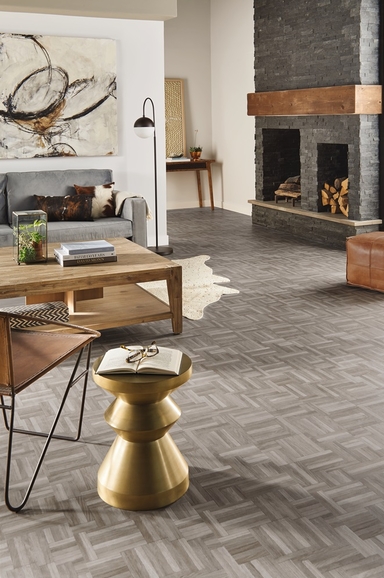

To prevent flanking sound transmission, engineers should include vibration breaks in both the joists and the subfloor. The biggest finding involved subfloors that are continuous across junctions. It looked at different configurations for attaching CFS floor joists to CFS-framed walls and how sound travels between spaces by direct paths and by flanking paths. “They also have to look at the flanking assembly.”Īn NRC study, “ Apparent Sound Insulation in Cold-Formed Steel-Framed Buildings” (RR-337), sponsored by the Canadian Sheet Steel Building Institute (CSSBI), focused largely on flanking sound transmissions. “ designers, architects, and engineers can no longer just look at the separating assembly,” Hoeller said.
#CFS FLOORING CODE#
(The 2015 International Building Code has only STC rating requirements.) Instead of requiring Sound Transmission Class ratings, it mandates system performance using Apparent STC ratings. For this reason, the 2015 edition of the National Building Code of Canada changed. Sound can travel between adjacent rooms via flanking paths, such as a common floor or ceiling. That creates a rigid connection - coupling the system and facilitating sound transmission, rather than impeding it. Contractors may use long screws that drill through the entire resilient channel. Resilient channels are often installed incorrectly. “It’s difficult to achieve good sound insulation with floor and ceiling assemblies without using resilient metal channels,” Hoeller said. They attach to a gypsum board ceiling (or wall) and add springiness to a second board layer that isolates sound transmissions. Resilient channels are cross-furring members. This is especially true if fibrous insulation fills the joist cavity.ĭouble-leg resilient channel, photo courtesy of ClarkDietrich The wider the cavity, the greater the buffer, and the greater the decoupling effect. “Twenty-four inches is better than 16 inches for sound attenuation,” Hoeller Partitioned within the joist cavity, air acts as a sound buffer. Increase the joist spacing as far as structural requirements allow.

Below the joists, a double-layered gypsum board ceiling reduces sound transmission better than one sheet of drywall.Īchieve CFS floor decoupling in two main ways:.Above the joists, two layers of OSB or plywood subfloor provides better sound attenuation than one layer.And so, it’s ideal to include as much mass as possible on either side of the joists. The heavier the mass separating floors and walls, the better the sound insulation between units. How can engineers minimize sound transmission in designing CFS flooring? Mass is the keyĪccording to Hoeller, subfloor mass matters more than anything else in controlling building noise. The methods used to lesson sound transmission vary. It’s important to understand how building sounds are transmitted. Flanking sound transmission travels through other pathways, such as common floors or ceilings and their junctions.Direct sound transmission travels through separating partitions.

Impact sound can originate as footsteps, a treadmill, or furniture dragged across the floor, as just a few examples.Īs noted in these diagrams, airborne sound and impact sound are transmitted in two ways:


 0 kommentar(er)
0 kommentar(er)
